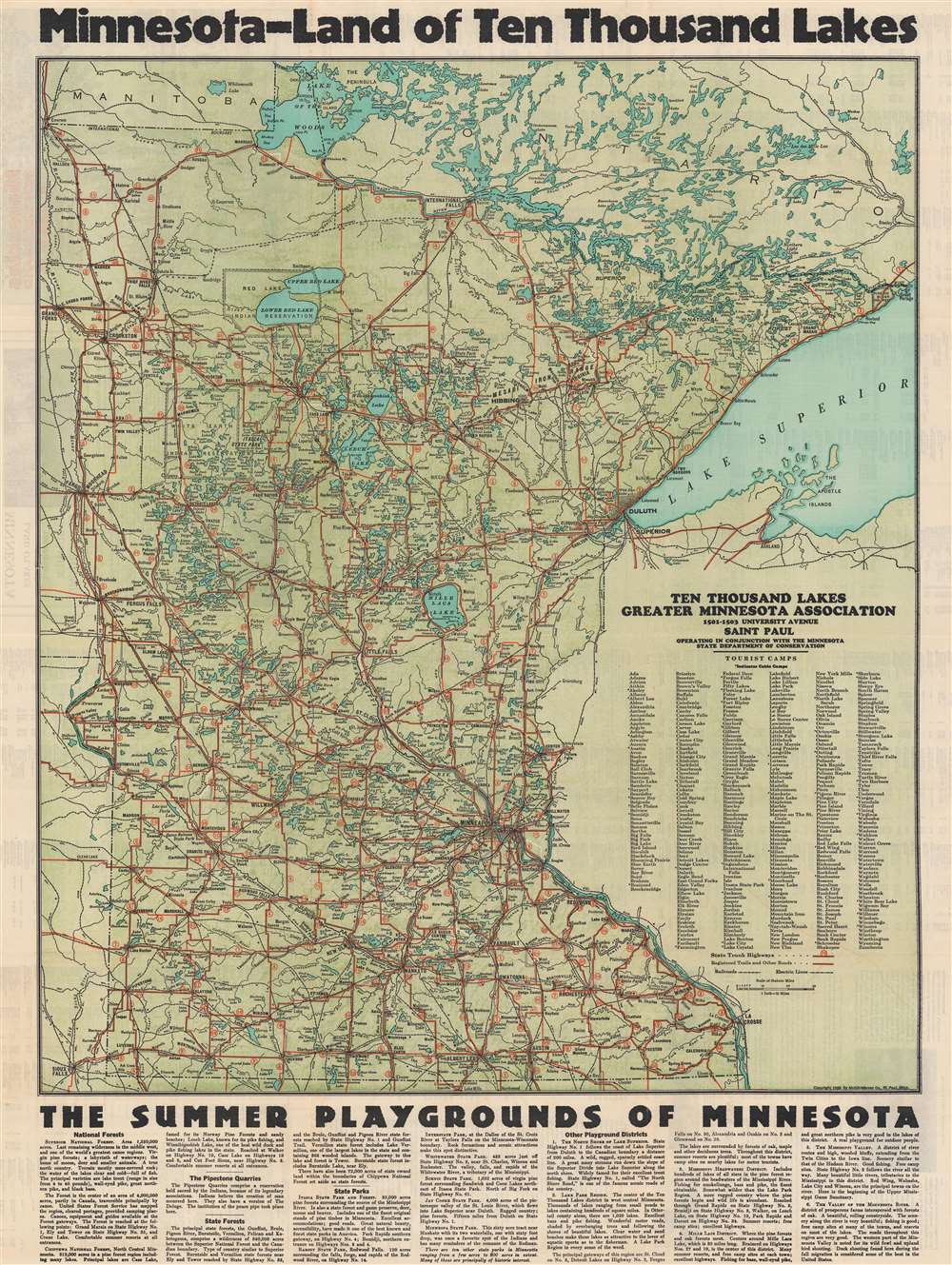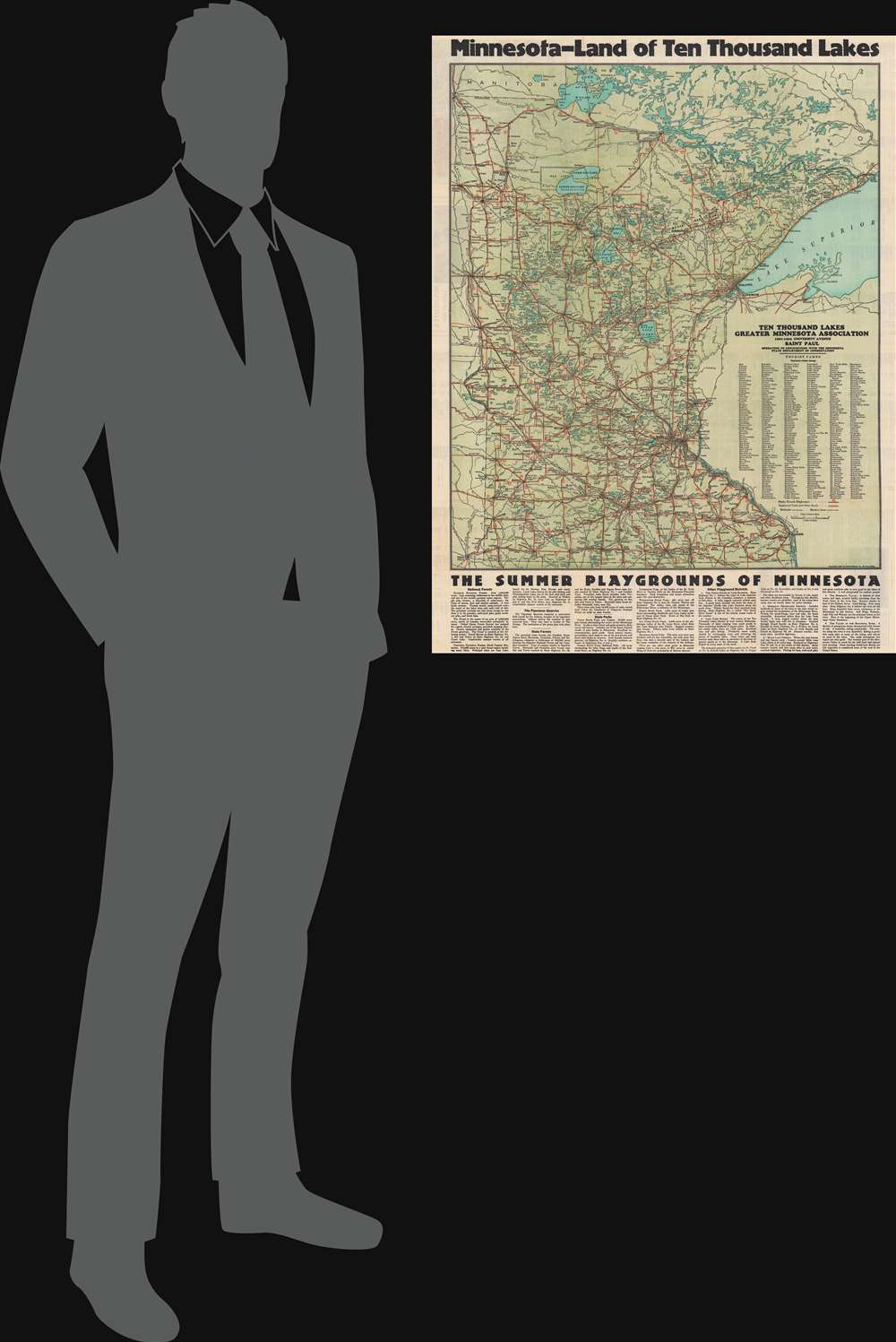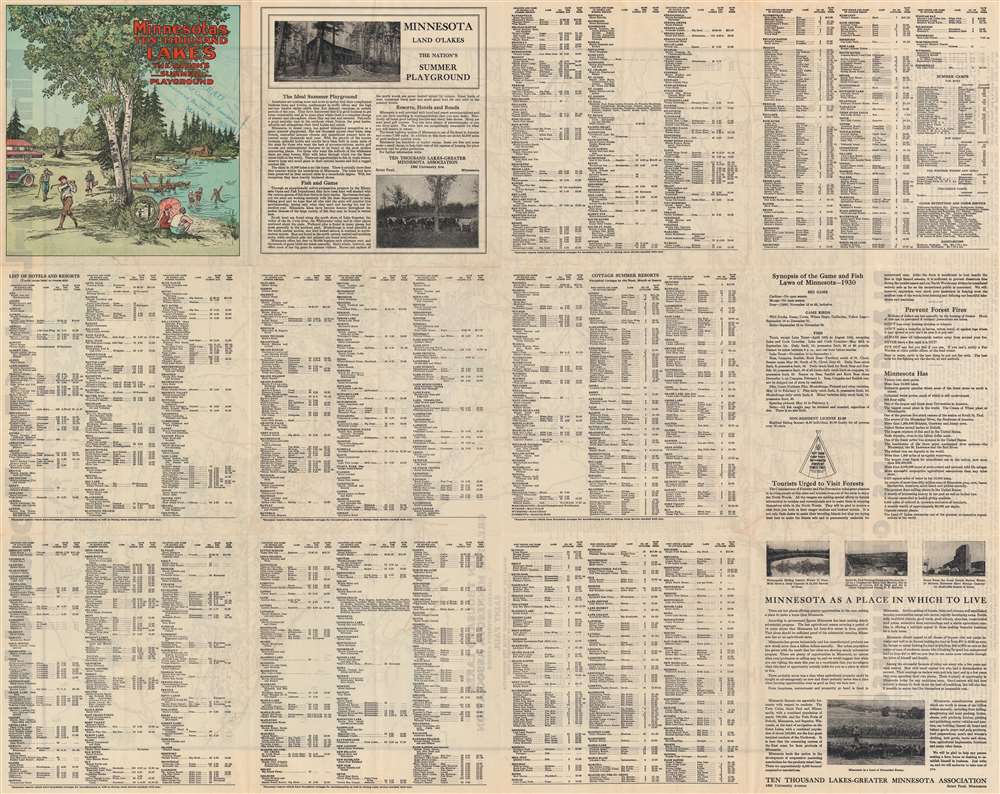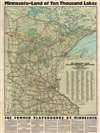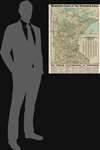This item has been sold, but you can get on the Waitlist to be notified if another example becomes available, or purchase a digital scan.
1930 McGill-Warner Map of Minnesota
Minnesota-mcgillwarner-1930
Title
1930 (dated) 33.5 x 24 in (85.09 x 60.96 cm) 1 : 950400
Description
Publication History and Census
This map was created and published by the McGill-Warner Company for the Ten Thousand Lakes - Greater Minnesota Association c. 1930. We note four examples cataloged in OCLC which are part of the collections at the University of Chicago, the Wisconsin Historical Society, the Minnesota Historical Society, and the University of Minnesota Twin Cities.CartographerS
Charles Herbert McGill (March 21, 1866 - April 7, 1941) was an American printer and publisher. Born in St. Peter, Minnesota, McGill moved with his parents to St. Paul, Minnesota at the age of four, after his father, Andrew Ryan McGill, accepted a position as a private secretary to Minnesota Governor Horace Austin. McGill attended high school in St. Paul and joined the National Guard at fifteen as a member of Company D, First Regiment, Minnesota National Guard. He remained in the military for twenty years and attained the rank of captain. McGill first entered the printing business after his father acquired the St. Peter Tribune and moved back to St. Peter to become city editor. McGill ran the paper for his father until it was sold in 1887. After the sale of the Tribune, McGill moved back to St. Paul and bought a job printing company with his school friend Wescott W. Price. The firm grew quickly, having to relocate to larger premises three times in eighteen months, before finally paying to have a building built for the firm in 1889, when the business was incorporated as the Price-McGill Company, and by this time a third partner, Robert H. Merriam, had joined the company. Not only did the firm concern itself with general printing, but also with book publishing. Mr. Merriam left the company in 1893 after buying his own publishing company in the east. By 1897, Price had also moved on and started his own real estate business. This led to McGill joining forces with Eli S. Warner and his brother Ellsworth C. Warner to form the McGill-Warner Company. In 1898, when the Spanish-American War broke out, McGill returned to the army and was commissioned as a captain. He was named assistant adjutant general of United States Volunteers by President McKinley and was attached to the staff of General Lucius F. Hubbard and served with the Third Division, Seventh Army Corps. McGill never saw combat, as his unit was still in the American South when peace was declared in December 1898. After resigning from the army, McGill returned to St. Paul and resumed his post as general manger of McGill-Warner. The McGill-Warner Company again outgrew its office space and had built a four-story factory building and moved its offices there in 1910. In July 1923, the McGill-Warner Company acquired the Pioneer Company, another printing firm, and reorganized as the McGill-Warner Company of Delaware. McGill became a vice president of this new firm, which was recognized as the largest printing firm in the northwest. While maintaining his position as first vice president of the McGill-Warner Company, in 1912 McGill reorganized the Cootey Company of Minneapolis and became its president and general manager. McGill also grew this company and became a major success, and by 1920 it was recognized as one of the larger lithography firms in the country. McGill married Anna Routh on October 25, 1890, who passed away on April 1, 1895. McGill remarried with Julia Hubbard on June 5, 1900, who also passed away before McGill, on December 24, 1913. More by this mapmaker...
Ellsworth C. Warner (1884 – January 5, 1942) was an American businessman. Born in Garden City, Minnesota, where Warner attended grammar and high school. After graduation Warner became a teacher and was in charge of a small country school during the winter months and worked odd jobs over the summers. He was appointed the state register of grain receipts in 1886, one of the first to be named to the position, which he held for a year before resigning to work for the Mankato Linseed Oil Company. He struck out on his own in 1889 and purchased a linseed oil mill at La Crosse, Wisconsin. He sold his mill to the National Linseed Oil Company in 1890 and began working for that same company as manager of its mills at La Crosse; Dubuque, Iowa; and St. Paul, Minnesota. He remained with the National Linseed Oil Company until it was bought by the American Linseed Oil Company in 1897. The following year, Warner, E.C. Bisbee, and W.C. Stone founded the Midland Linseed Oil Company, which at one point was considered to possess some of the most advanced factories in the country and shipped its products worldwide. In 1894 he purchased the McGill-Price Printing Company with his brother Eli S. Warner and Charles H. McGill, which grew into one of the most successful printing firms in the United States. Warner also held important positions in many financial institutions throughout Minnesota and Canada. He married Francis Melvina ‘Mellie’ Bisbee, his business partner’s sister, on January 15, 1890, with whom he had four sons. Midland Linseed began to falter due to an acrimonious divorce between Mellie and Ellsworth. In the end the divorce forced the sale of the company to the Archers-Daniels-Midland Company. Mellie Bisbee was awarded $1 million in the divorce settlement. Mellie again sued Warner in 1929 when she claimed that a $2,200 inheritance was seed money for nearly $5 million worth in oil mill investments. Unfortunately, no record of the results of this lawsuit has surfaced. Warner remarried with Roslyn Allen in 1930 and died in his winter home in Palm Beach, Florida in 1942. Learn More...
Eli Sampson Warner (June 6, 1856 – June 23, 1943) was an American businessman and politician. Born in Minnesota, Warner was a lifelong political figure in the state. In 1897, he, along with his brother Ellsworth C. Warner (1884 – January 5, 1942) and Charles H. McGill (March 21, 1866 - April 7, 1941), owned and operated the McGill-Warner Company. Eli served as secretary-treasurer for decades until the death of his brother, when he became president until he retired later that year. He served two separate terms in the Minnesota State Legislature from two different districts. Warner moved to St. Paul in 1895 to become secretary of the state railroad and warehouse commission and served as United States Surveyor General from 1901 until 1909. For years he acted as a Republican Party boss in Minnesota, even serving as chairman of the state Republican Party, and directed many political campaigns. He worked as the Minnesota State Fair Commissioner in the 1910s and organized several early automobile races. Warner married Anna F. Walker in 1878 with whom he was married until she passed away in 1920. He later remarried with Emily May Warner, which was also her second marriage. Learn More...

